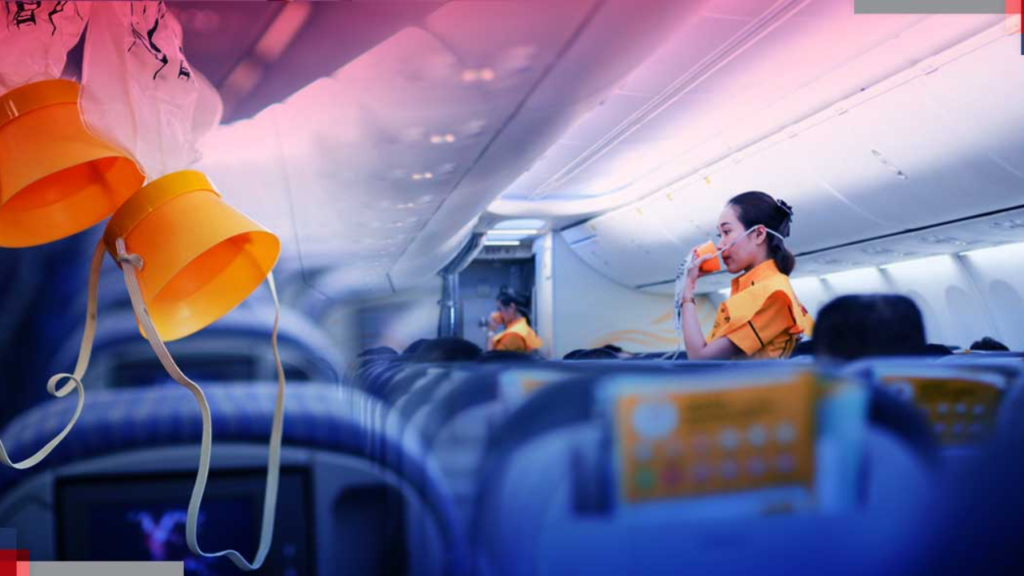Corporate Aircraft Emergency Preparedness: Security Protocols Every Professional Should Know

In the high-stakes world of corporate aviation, emergency preparedness is not just a necessity—it’s a critical component of overall security and safety. Aircraft emergency preparedness encompasses a wide range of protocols and procedures designed to handle various crisis scenarios effectively. This blog post delves into the essential security protocols that every corporate aviation professional should know, emphasizing the importance of readiness in ensuring the safety of passengers, crew, and valuable assets.
The Importance of Aircraft Emergency Preparedness:
Recent studies show that well-prepared flight crews and security personnel can reduce the impact of in-flight emergencies by up to 70%. This statistic underscores the critical nature of comprehensive emergency preparedness in corporate aviation.
Key Components of Aircraft Emergency Preparedness:
1. Risk Assessment and Scenario Planning:
– Conducting thorough risk assessments for various emergency scenarios
– Developing detailed response plans for each identified risk
– Regular updating of emergency protocols based on new threats and industry learnings
2. Crew Training and Drills:
– Comprehensive emergency response training for all flight crew members
– Regular simulations and drills covering various emergency scenarios
– Cross-training crew members in multiple emergency response roles
Case Study: A corporate flight department implemented monthly emergency drills, resulting in a 40% improvement in response times during actual incidents.
3. Communication Protocols:
– Establishing clear communication chains for different types of emergencies
– Implementing secure, redundant communication systems
– Training in effective crisis communication with passengers, ground control, and emergency services
4. Medical Emergency Preparedness:
– Advanced first-aid training for all crew members
– Equipping aircraft with comprehensive medical kits and AEDs
– Establishing protocols for in-flight medical emergencies and diversions
5. Security Breach Protocols:
– Procedures for handling unruly passengers or potential hijacking attempts
– Secure cockpit entry and communication protocols
– Coordination with ground-based security and law enforcement agencies
Expert Insight: “In aircraft emergency preparedness, the key is to plan for the unexpected,” notes Captain Sarah Johnson, a veteran corporate pilot. “Our protocols must be flexible enough to adapt to rapidly evolving situations.”
6. Fire Safety Measures:
– Advanced fire detection and suppression systems
– Regular fire safety drills and equipment checks
– Specific protocols for different types of on-board fires (electrical, fuel, cabin)
7. Rapid Decompression Procedures:
– Automatic oxygen deployment systems
– Crew training in rapid descent procedures
– Passenger briefing on oxygen mask usage and emergency descent protocols
8. Emergency Landing and Evacuation:
– Detailed procedures for various emergency landing scenarios
– Regular evacuation drills, including water landing protocols
– Equipping aircraft with advanced life rafts and survival kits
9. Handling Mechanical Failures:
– Comprehensive checklists for various system failures
– Simulator training for handling critical mechanical emergencies
– Protocols for communicating technical issues to ground maintenance teams
10. Post-Incident Procedures:
– Clear guidelines for securing the scene after an incident
– Protocols for preserving evidence and cooperating with investigators
– Crisis management and media communication strategies
Innovative Technologies Enhancing Aircraft Emergency Preparedness:
1. AI-Powered Predictive Maintenance:
– Using machine learning to predict potential mechanical failures before they occur
– Real-time monitoring of aircraft systems for early warning signs
2. Virtual Reality (VR) Training Simulations:
– Immersive VR environments for realistic emergency response training
– Customizable scenarios to prepare for a wide range of emergencies
3. Advanced Emergency Locator Transmitters (ELTs):
– Next-generation ELTs with improved accuracy and faster detection rates
– Integration with global satellite networks for rapid location and rescue
4. Smart Emergency Lighting Systems:
– Adaptive lighting that guides passengers to exits during evacuations
– Integration with smoke detection systems for improved visibility in fire scenarios
Regulatory Compliance and Industry Standards:
Effective aircraft emergency preparedness must align with various regulations and standards:
1. FAA Emergency Preparedness Requirements: Adherence to Federal Aviation Administration guidelines for emergency procedures
2. ICAO Standards: Compliance with International Civil Aviation Organization emergency preparedness recommendations
3. IS-BAO Protocols: Following International Standard for Business Aircraft Operations emergency response guidelines
4. Company-Specific Policies: Integrating corporate security policies with industry-standard emergency protocols
Human Factors in Emergency Preparedness:
The human element is crucial in effective emergency response:
1. Psychological Preparedness: Training crew members to manage stress and make clear decisions under pressure
2. Crew Resource Management (CRM): Enhancing teamwork and communication during emergencies
3. Passenger Management: Techniques for managing passenger behavior and maintaining calm during crises
4. Cultural Sensitivity: Adapting emergency communication for diverse passenger groups
Case Study: After implementing an enhanced CRM program focused on emergency scenarios, a corporate flight department saw a 50% improvement in team performance during crisis simulations.
Measuring and Improving Emergency Preparedness:
To ensure ongoing effectiveness of emergency preparedness:
1. Conduct regular audits and assessments of emergency response capabilities
2. Analyze data from drills and actual incidents to identify areas for improvement
3. Stay updated on industry best practices and emerging threats
4. Continuously refine and update emergency protocols based on new information and technologies
Training for Aircraft Emergency Preparedness:
Our Corporate Aircraft Security Course offers a comprehensive module on emergency preparedness, covering:
– In-depth training on various emergency scenarios and response protocols
– Hands-on experience with emergency equipment and systems
– Crisis management and decision-making under pressure
– Integration of security measures with emergency response procedures
This training ensures that aviation professionals are well-prepared to handle any emergency situation effectively and confidently.
Aircraft emergency preparedness is a critical aspect of corporate aviation security that demands continuous attention, training, and refinement. By mastering these essential protocols and staying abreast of the latest technologies and best practices, aviation professionals can ensure the highest levels of safety and security for their passengers and crew.
Are you ready to enhance your aircraft emergency preparedness skills and become an indispensable asset in corporate aviation security? Enroll in our comprehensive Corporate Aircraft Security Course and master the art of emergency response in aviation. Visit to learn more and register today. Don’t wait for an emergency to test your readiness – prepare now and ensure the safety of every flight!


